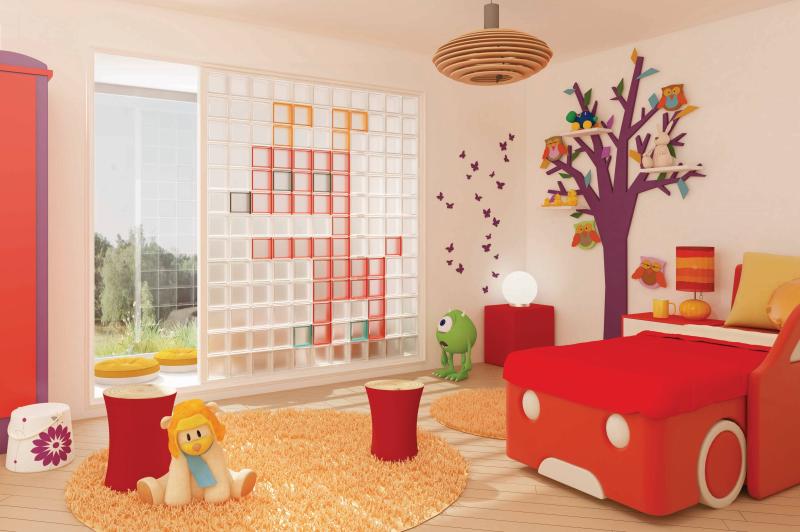The Role of Glass Blocks in Light and Space: How to Harness Their Unique Power
When it comes to design elements that combine functionality with aesthetics, glass blocks are a standout choice. From private homes to commercial spaces, glass blocks have been used for decades to create captivating interiors while serving practical purposes. Their ability to manipulate light and redefine spaces makes them a versatile and timeless material. Let’s explore how glass blocks can transform spaces by manipulating and conveying light.

When it comes to design elements that combine functionality with aesthetics, glass blocks are a standout choice. From private homes to commercial spaces, glass blocks have been used for decades to create captivating interiors while serving practical purposes. Their ability to manipulate light and redefine spaces makes them a versatile and timeless material. Let’s explore how glass blocks can transform spaces by manipulating and conveying light.
The Science Behind Glass Blocks and Light
Glass blocks are crafted to diffuse light while maintaining privacy. Unlike standard glass panes, the textured surfaces and internal airspace of glass blocks scatter light in multiple directions, creating a soft, even glow. This characteristic makes them ideal for spaces where natural light is desired without the risk of glare or exposure.
Ways to Utilize Glass Blocks for Light and Space
1. Maximizing Natural Light
Glass blocks can be used in areas where natural light is limited. By incorporating them into interior or exterior walls, check out our glass blocks made for interior and exterior applications, they allow daylight to penetrate deeper into the space. For instance, a glass block wall in a bathroom can flood the area with light from an adjacent room or outdoor space without compromising privacy.
2. Creating a Visual Focal Point
Glass blocks can serve as a striking design element that draws the eye. When strategically backlit, they produce a luminous effect that enhances the overall ambiance of a room. Use them as part of a feature wall or a partition to define zones while maintaining openness.

3. Adding Color to Spaces
Colorful glass blocks can dramatically change how light interacts with your space. By using tinted blocks, you can introduce playful hues into the light that filters through, creating a dynamic and vibrant atmosphere. These are perfect for children’s spaces, artistic studios, or any area that needs a touch of whimsy. Check out our array of colors here.

4. Enhancing Privacy Without Sacrificing Light
One of the most popular applications of glass blocks is in areas where privacy is essential, such as bathrooms, stairwells, or office spaces. Glass blocks obscure direct visibility while still allowing natural light to flow through, eliminating the need for heavy curtains or blinds. We have a variety of moderate and maximum privacy options.

5. Separating Spaces Without Creating Darkness
Glass block partitions are an excellent solution for open-concept designs. They maintain the flow of light between spaces while adding a subtle sense of division. This is particularly useful in offices, where shared areas can benefit from light-filled boundaries.

6. Highlighting Architectural Features
Use glass blocks to highlight unique architectural elements, such as archways or columns. The way light interacts with their shapes can add depth and drama, turning ordinary spaces into stunning visual moments.

Conclusion
Glass blocks are more than just a building material—they’re a tool for sculpting light and redefining space. Whether you're looking to brighten a dim corner, create a striking visual feature, or add a splash of color, glass blocks offer endless possibilities. Embrace their unique ability to manipulate light, and watch your space transform into something extraordinary.
Ready to bring your vision to life? Explore the endless possibilities with our collection of glass blocks and start creating today!


